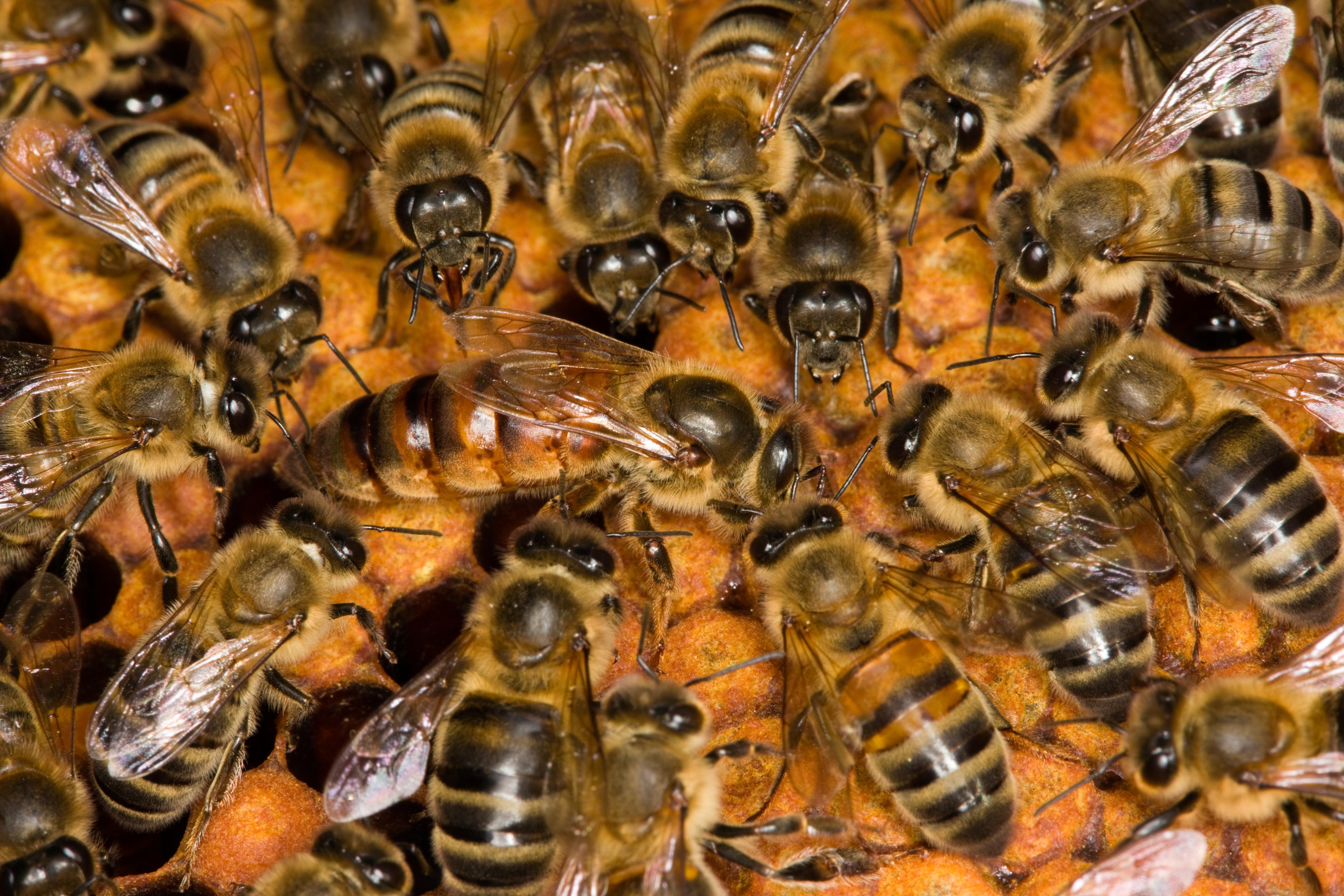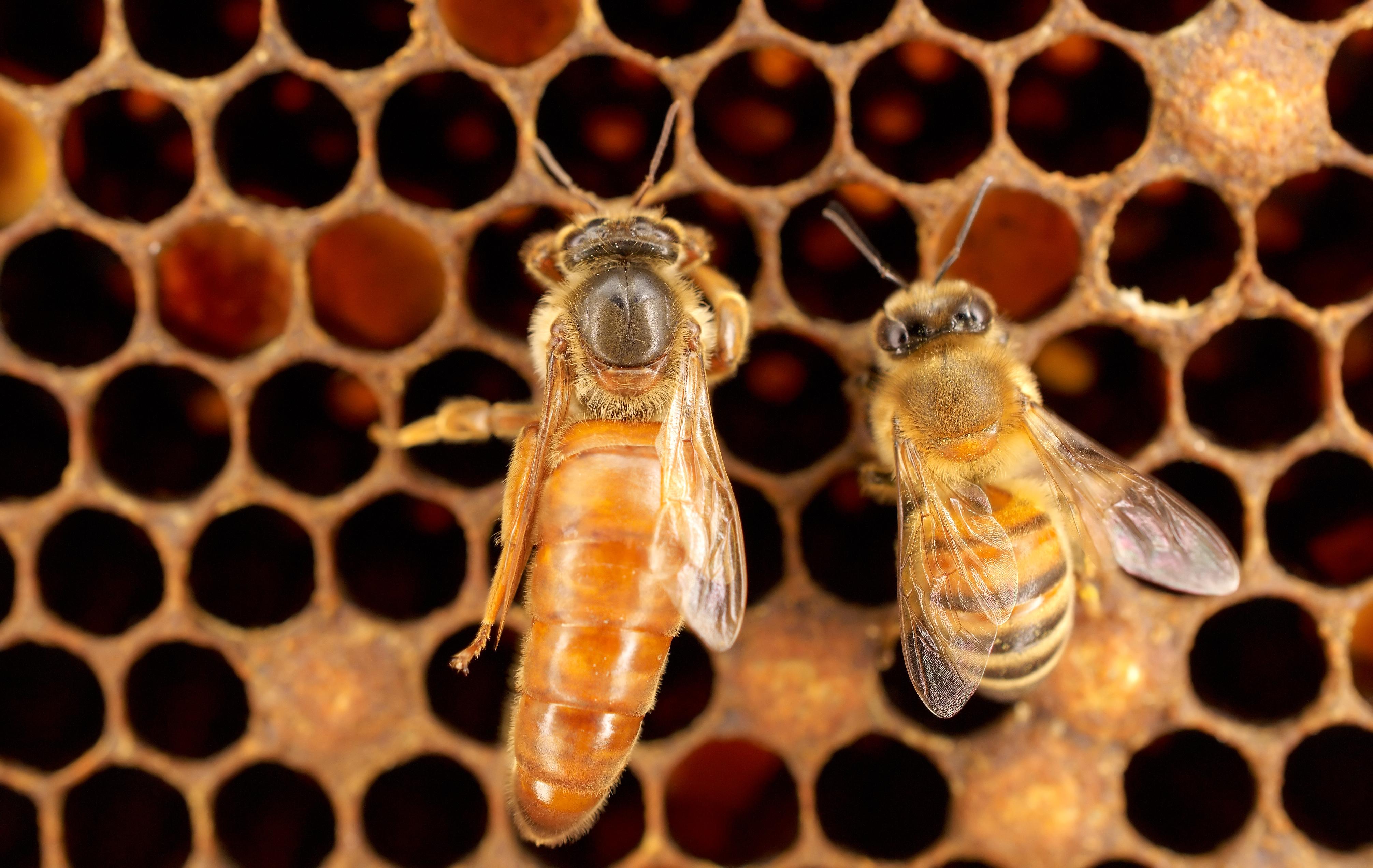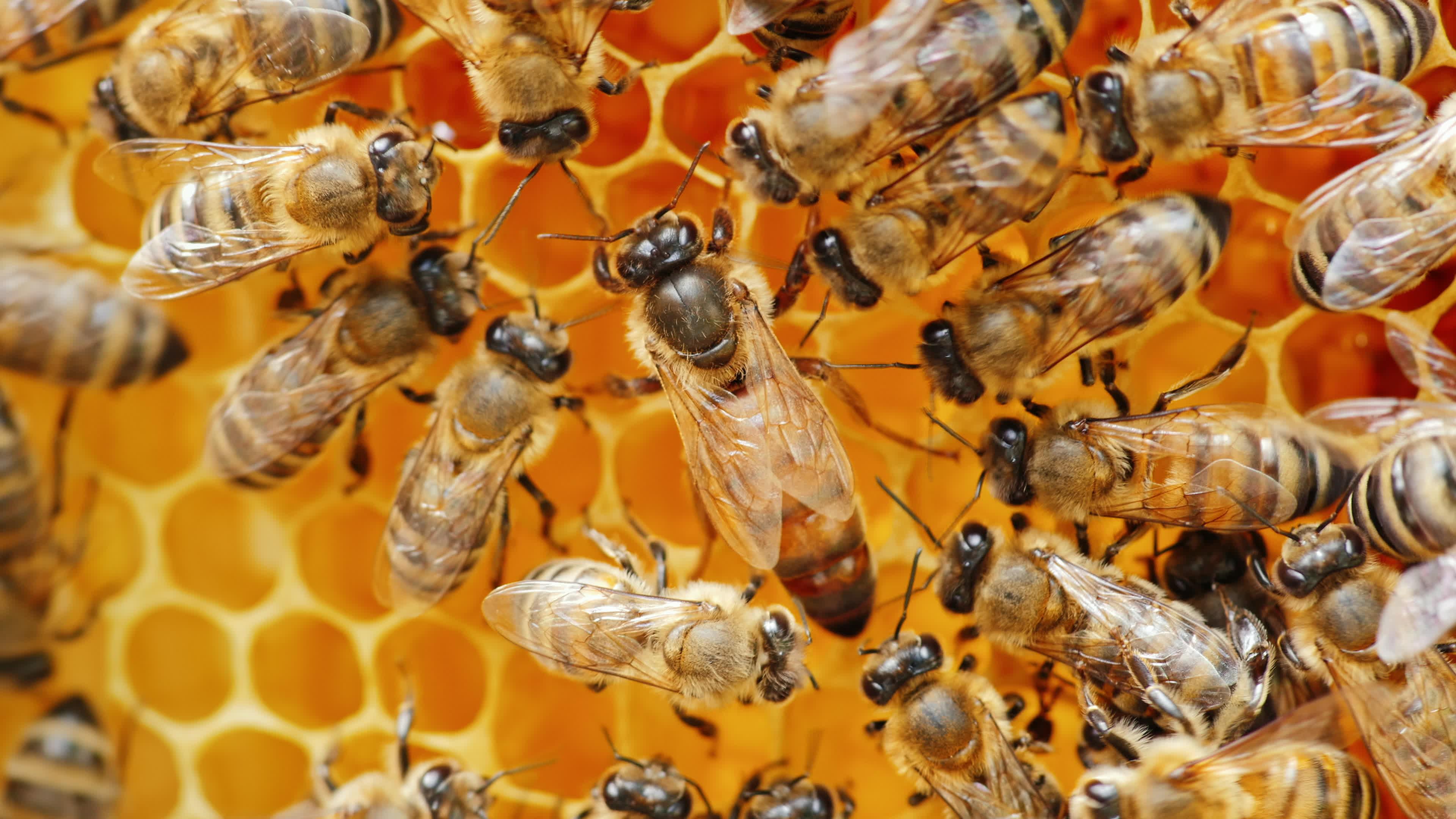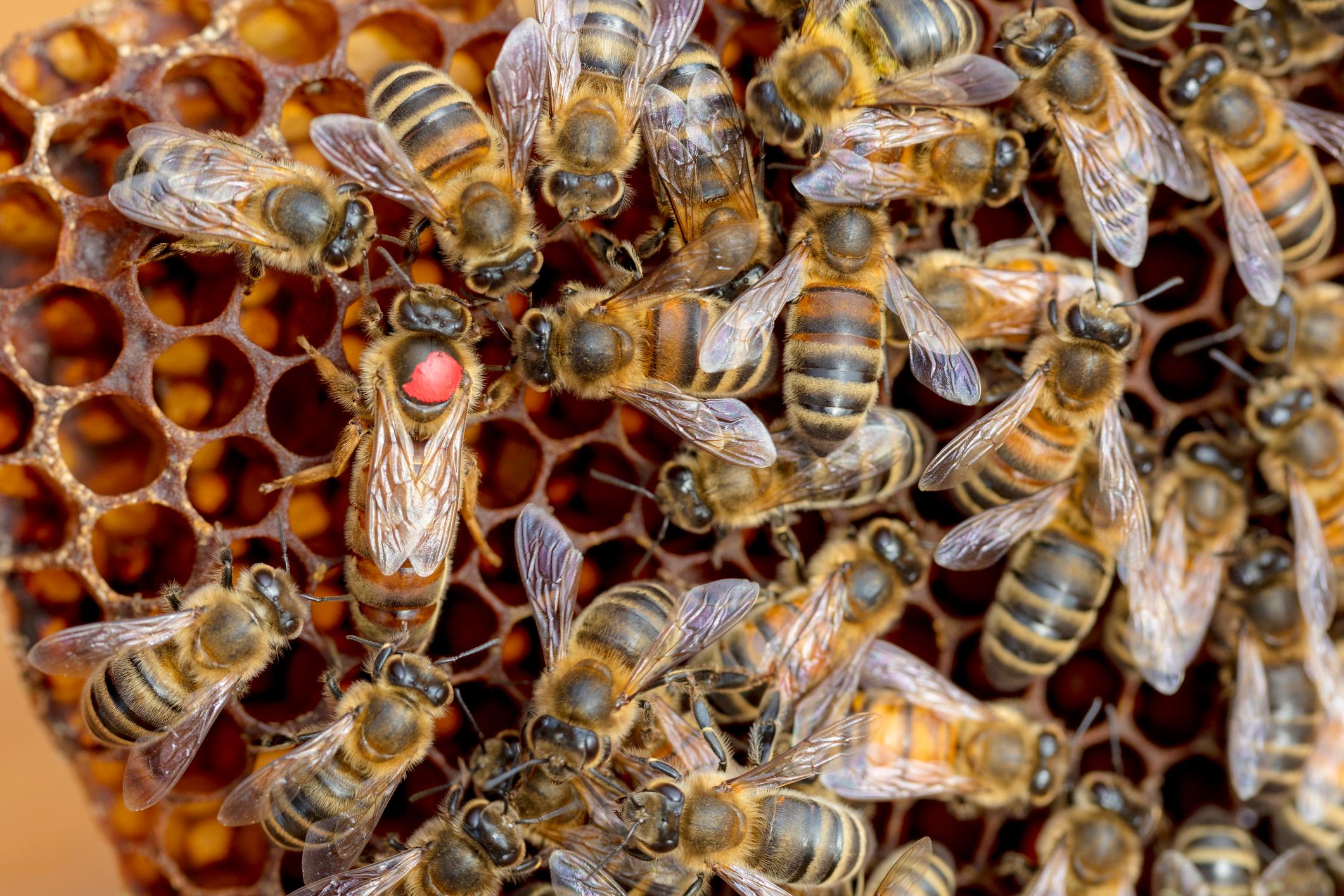If a Queen Bee Dies, the Hive Quickly Replaces Her
Updated Aug. 20 2020, 1:22 p.m. ET

One of the most important and fascinating species in our ecosystem is the bee. Bees are essential to the productivity and health of our environment. Thankfully, hives work hard to make the rest of the ecosystem thrive. The sole female bee in the hive lays the eggs that make the hive thrive — the queen bee plays an incredibly crucial role. So it’s no surprise that when the queen bee dies, the entire colony works to gain back its steady organization.
The queen bee releases chemical signals that stop other female worker bees' ovaries from functioning. But shortly after she dies, these chemical signals wear off, which means worker bees can lay eggs, and the highly efficient, tightly controlled system breaks down. That’s when it’s time for the worker bees to come together to create a new queen.
So, what happens when the queen bee dies?
According to EarthSky, when a bee colony loses a queen, the worker bees notice the absence of a chemical she produces, which is called a pheromone; pheromones are chemicals that serve as a stimulus to other individuals of the same species for one or more behavioral responses.

In the case of bees, when the queen bee’s pheromones are gone, the workers begin a process of emergency queen rearing. They start building queen-size rearing chambers for about 10 to 20 young female larvae, one of which will be the next queen.
One of the more interesting points is that if a queen does not die accidentally and yet dies of old age, the process is a bit different to find a new queen. As she ages, the queen produces fewer pheromones. The decline in pheromone concentration signals the workers to start building queen-size cells in the hive. If the queen is still alive, she herself lays the eggs of her potential successors into these cells.
The potential new queen bees fight to the death.
Ordinarily, these potential successor eggs would hatch into female larvae and grow up as workers, like the rest of the hive. However, since they’re living inside special, larger cells — that are vertically oriented — the workers feed these potential queens a special food called “royal jelly.”

This diet creates a fertile queen rather than a sterile worker. So, for example, all of the developing queens have the fully developed ovaries needed to lay eggs.
The first potential queen bee to emerge will kill the other developing queens in order to make sure she is the first (and last) one standing. If two should emerge at the same time, then the rival queens will have a battle to the death. The last remaining queen bee then begins to lay eggs. The process from queen loss to egg stage takes about 29 days.
Sometimes, hives do not succeed in rearing a new queen bee.
In some cases, the hive does not meet the goal of rearing a new queen bee. Unfortunately, a queenless bee colony cannot survive for a sustained period. According to Sciencing, the absence of a queen bee affects the behavior of worker bees; they may become agitated or aggressive.

Worker bees may continue to lay eggs, but because they are not fertilized they are all drones instead of workers. Since drones do not collect any food or do any work, the number of productive bees drops until the colony disappears completely. The whole colony may become stressed and vulnerable to pests or diseases. The only way for a beekeeper to save a colony without a queen is to introduce a new queen from outside the hive.